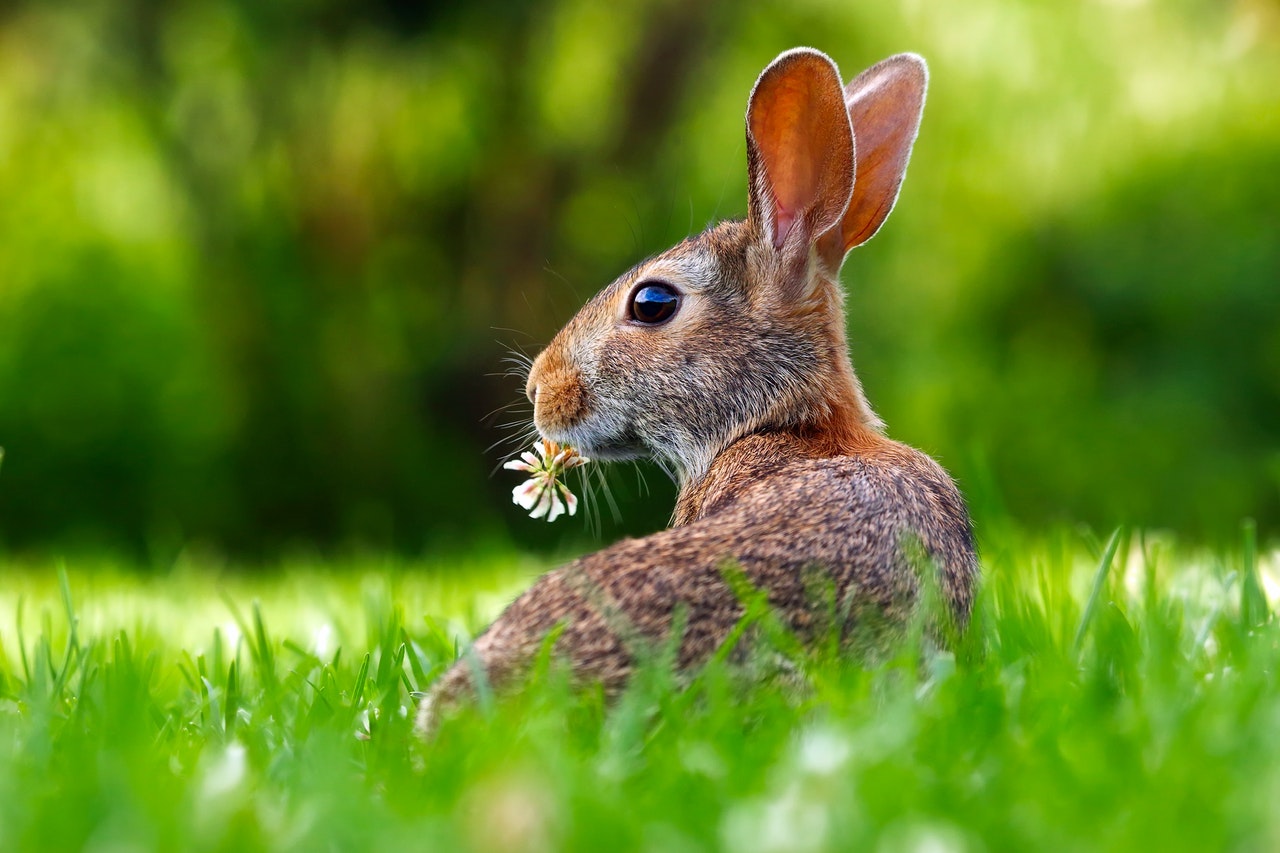Protecting lawns and gardens from wildlife
by Ontario SPCA and Humane Society | Interesting Wildlife Fact Sheets | July 13, 2025

‘Tis the season for gardening! But what do you do if you keep finding your lawn or gardens dug up? We’re here to help, with tips for handling the curious or hungry wildlife exploring your garden.
As more and more of their habitat gets destroyed each year, wildlife face enormous hardships. Each year they are forced into closer contact with humans and must compete for resources. With a little understanding, patience, a few precautions and simple steps, we can all enjoy the wonderfully interesting wild animals who share our backyards and cities.
Common questions:
Who is digging up my lawn and what can I do about it?
Both skunks and raccoons dig up lawns in search of grubs. Treating the lawn with an environmentally friendly and non-toxic pesticide will control the grub population. If it is a small area of lawn, you can sprinkle or spray a repellant such as hot sauce diluted with water (one tablespoon in one gallon of water) on the area to deter wild animals.
Community cats may also be digging in your gardens. Alley Cat Allies has a helpful resource that outlines what to do if you suspect cats are the culprits at your home!
Who is eating my garden and how can I prevent this?
Gardens are especially attractive to wildlife because they offer an accessible source of food. Prior to attempting any deterrent or exclusion method, it is important to determine what type of animal is actually damaging the garden. Animals leave behind clues to their identity, and you can use them to figure out who is visiting your garden. For example:
- Ragged, torn twigs or leaves, or plants cut down to the base indicate a deer. Deer also have their favourite snacks, including hostas and lilies.
- Neatly clipped ends of twigs and vegetation indicate the presence of rabbits and groundhogs.
- Small, pea-shaped droppings in the area are also an indication of rabbits.
- Missing fruits or veggies can be any number of animals, including chipmunks, birds, racoons, groundhogs and rabbits.
Once you have determined which animals are eating the garden, you can undertake some simple steps to prevent the activity.
Steps to prevent animals eating your garden:
Fences restrict rabbits and deer from access to gardens
Physical barriers may be set up so that certain animals cannot access the garden. You may have to place the fence a few inches into the ground so that animals cannot sneak under the fence. Obviously, the height of the fence would need to be greater to exclude deer than to exclude rabbits.
Fencing material should be stronger than chicken wire because most animals can manipulate it and gain entry to the garden. A lower-gauge, thicker wire mesh works best. Fencing is usually not successful in restricting raccoons from gardens. They are very good climbers and would have no difficulties climbing over the fence.
Covers restrict most animals from vegetables
Plant covers are also successful at keeping most animals from consuming garden plants. Covers can be purchased at garden centres, or you can make your own by cutting the bottom out of a milk or pop jug and placing it over the plant. To protect larger plants, place a net over them. For fruit trees, large nets can be purchased which cover the whole top of the tree to protect the fruit from birds and wild animals. To protect tree trunks from wild animals, plastic or metal screens can be purchased and wrapped around the trunks to a height of about two to three feet.
Deterrent devices work on all animals
Another approach to deter wild animals from your garden is to install deterrent devices. These devices are most useful when dealing with rabbits, groundhogs, skunks, and raccoons.
There are many commercial products you can buy from garden centres, such as motion sensitive lights, sprinklers, and acoustical alarms. There are also many homemade devices that are successful, such as the traditional scarecrow. The key to making this device successful is movement. For example, the scarecrow must move by wind or motorized equipment.
Another device to try is scare tape. Scare tape is reflective and auditory. Simply cut the tape into strips and attach them to posts or wires around the garden. The wind will cause the tape to reflect light and make noise, which will deter wild animals. Aluminum pie plates can also be used.
Note: Any deterrent method you use may need to be changed from time to time as animals adapt and become accustomed to noises and motion. Deterrent devices must remain novel and strange to be effective.
Taste repellents
You can also try a taste repellant applied to the plants that the wild animals are eating. A diluted mixture of hot sauce and water (one tablespoon of hot sauce in one gallon of water) can be sprayed directly on the fruits/vegetables or around the perimeter of the garden. Remember to wash fruits and vegetables thoroughly before eating.
For more tips on co-existing with wildlife, check out our Wildlife Fact Sheets.
If this information was helpful, please help us continue to educate about pet health and well-being by making a donation. As a registered charity that does not receive annual government funding, the Ontario SPCA and Humane Society depends on the generosity of donors to change the lives of animals in need.
Categories
Testimonial
Three cheers for the volunteers!
Three cheers for the volunteers! Keep doing wonderful work, thank you!
